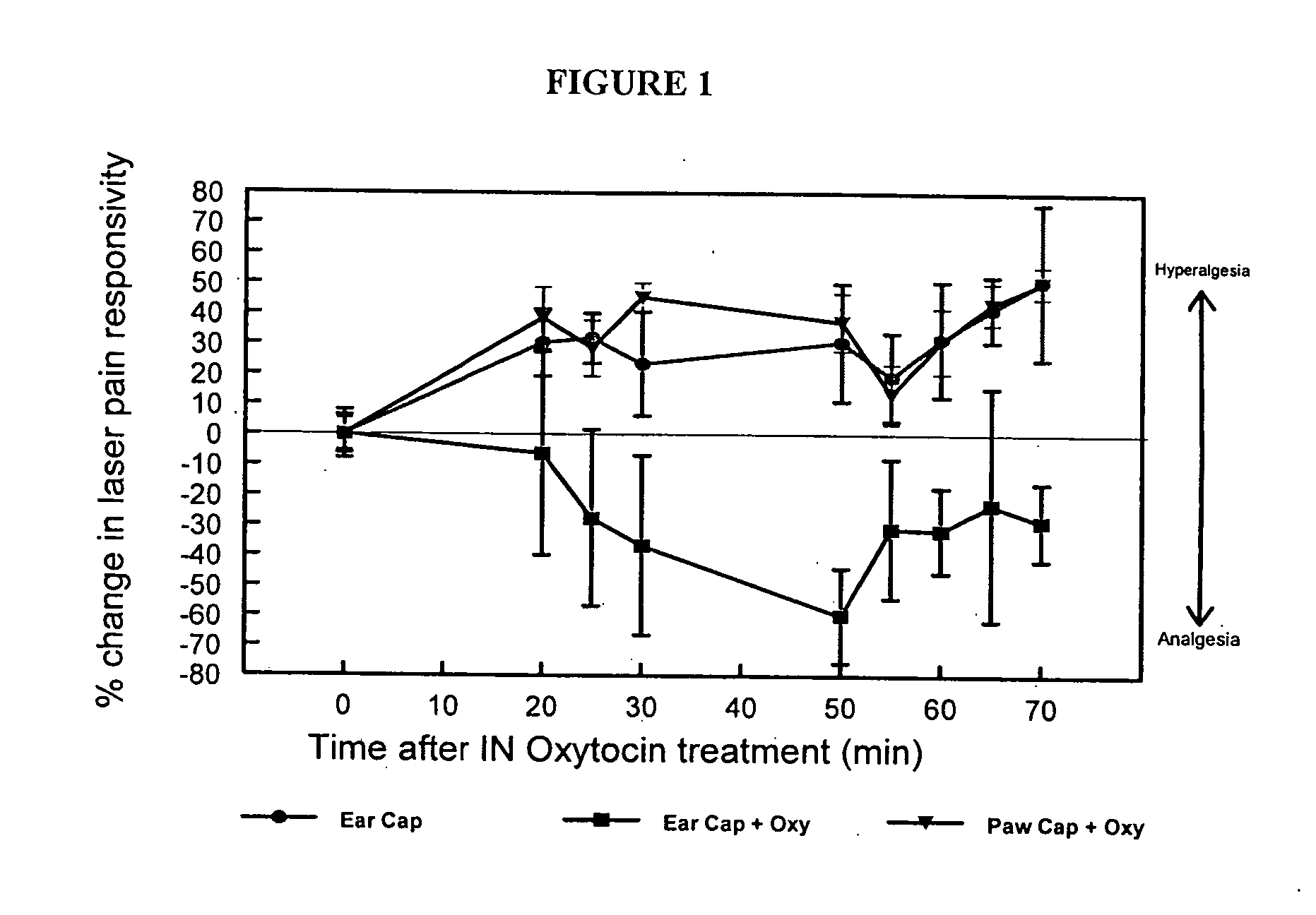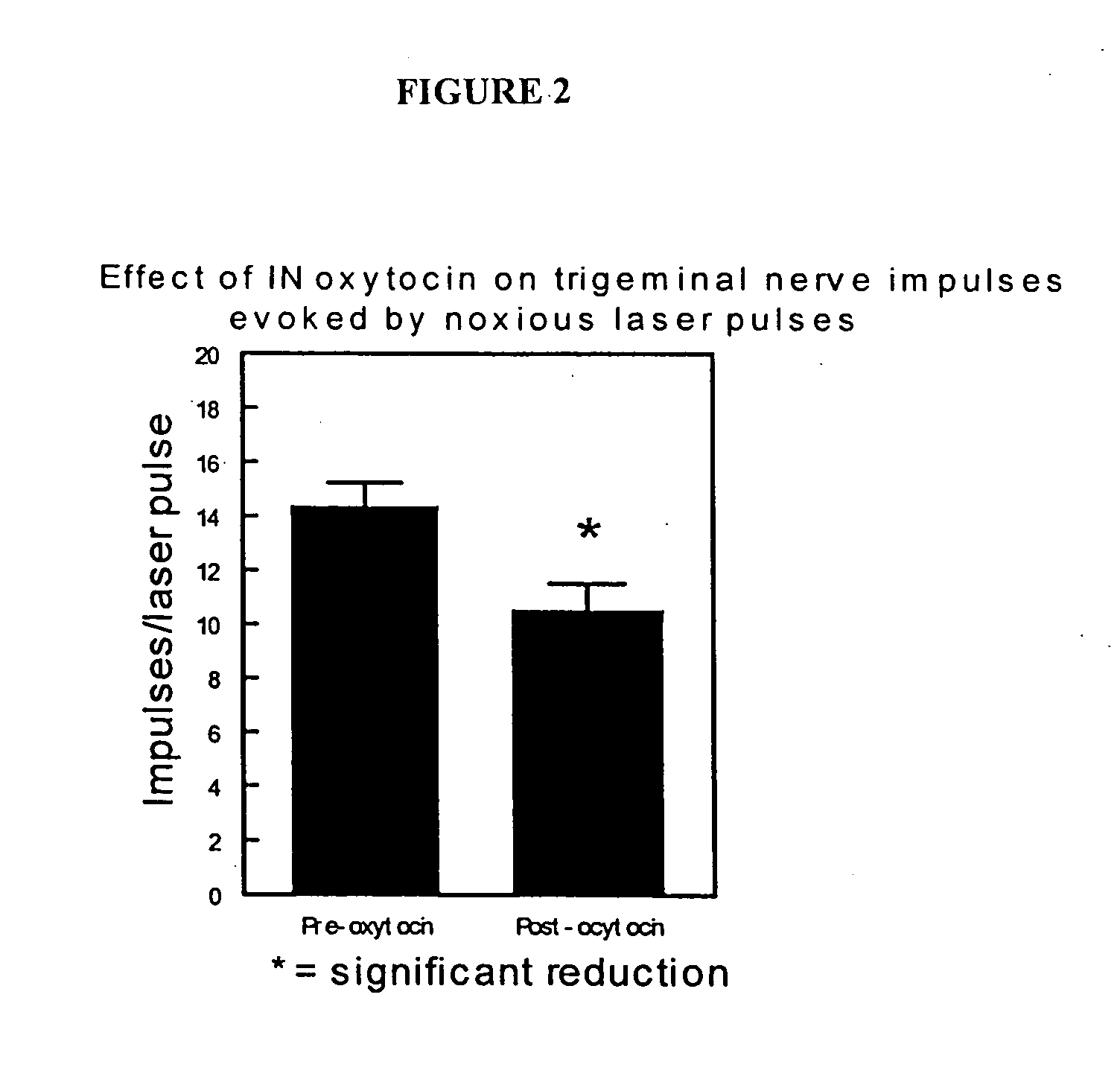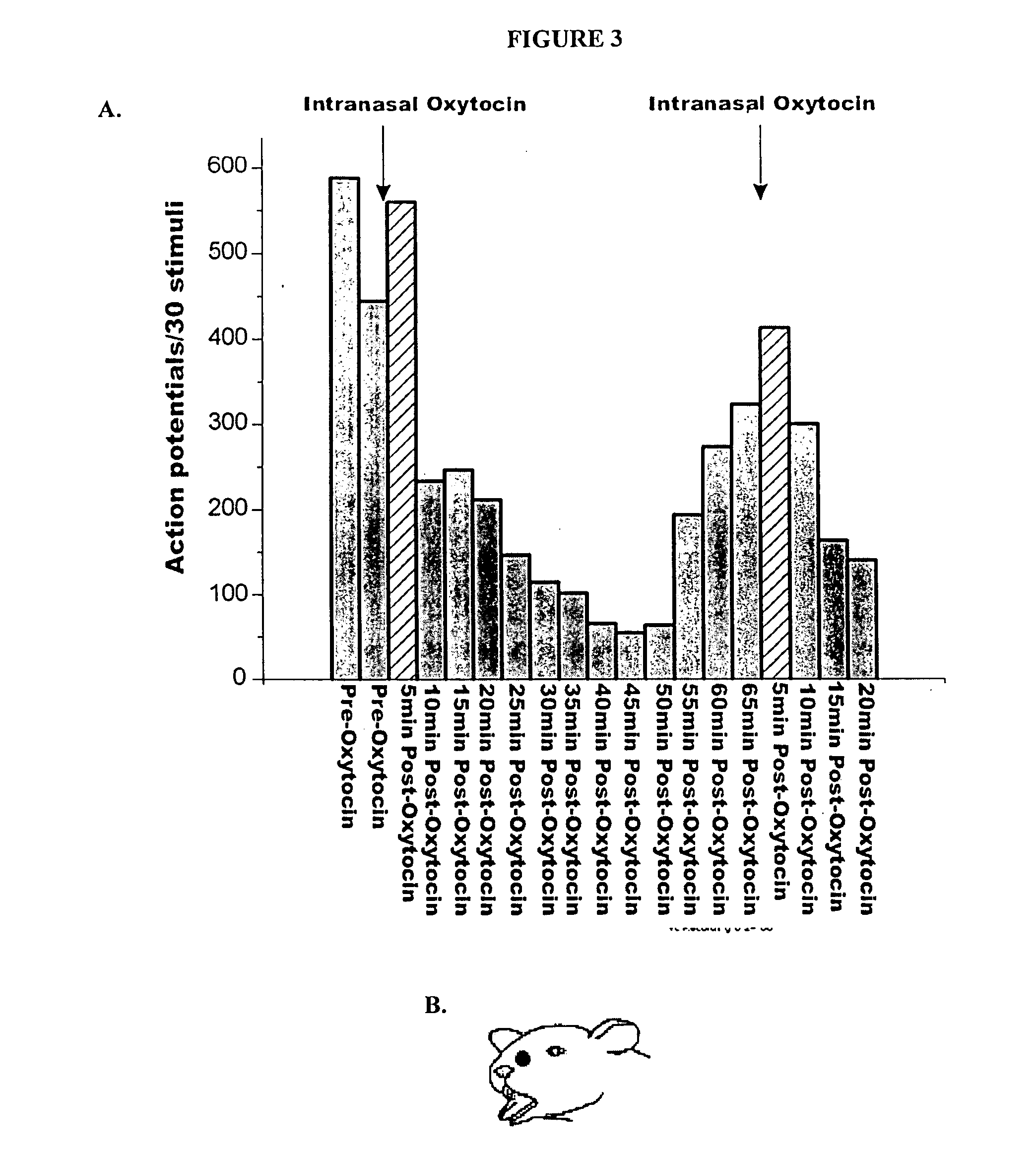Methods for treatment of headaches by administration of oxytocin
a technology of oxytocin and headache, which is applied in the field of headache and headache or head pain disorders, can solve the problems of headache disorders that can be disabling for afflicted individuals, impose substantial hardships and burdens on afflicted individuals, and headache pain, so as to reduce pain and pain. the effect of rating
- Summary
- Abstract
- Description
- Claims
- Application Information
AI Technical Summary
Benefits of technology
Problems solved by technology
Method used
Image
Examples
example 1
[0108] Activity of an analgesic agent can be tested in a rat model by studying treatment-induced changes in latencies (times) of withdrawal in response to noxious heating of the skin, typically applying a stimulus to an ear or a hindpaw. Thus, application of coherent or non-coherent (non-laser) radiant heat to the ear or hindpaw will elicit rapid withdrawal movements. Latencies of withdrawal have been demonstrated to be sensitive to analgesic treatments, such that analgesics increase the latency to withdrawal. Transmucosal or transdermal administration of analgesic agents can be tested for regional and / or systemic analgesia. After administration of an analgesic agent an increase in latency to withdrawal time of the ear would indicate regional analgesia. A change in the latency to withdrawal time of the hindpaw would indicate whether there was a systemic analgesic effect, i.e. no change in the latency to withdrawal time indicates no systemic effect, while an increase in latency to wi...
example 2
[0112] Sprague-Dawley rats (Charles River Laboratories) were lightly anesthetized with urethane and placed with minimal restraint on a heating pad to maintain their body temperature at 37° C. A laser beam was directed via a fiber optic cable to the rostral external part of both ears or to the hindpaws as described above. Baseline withdrawal latencies were measured by delivering 4 separate stimuli with a resting period of approximately 15 minutes between each stimulus. 50 μl of oxytocin in phosphate-buffered saline was intranasally administered in 5 equal 10 μl applications at a dosage of 10 μg. Withdrawal latencies for both ears and hindpaws were tested five minutes after the final application of oxytocin. As described above, testing sessions were videotaped and analyzed. Results demonstrated that intranasal administration of oxytocin at this dosage achieved a regional analgesic effect in the head region without a systemic analgesic effect at the hindpaw.
[0113] Rats were intranasal...
example 3
[0114] Upon presentation at the clinic, a patient is asked for a pain assessment (0-10 rating on VAS). The VAS is an 11-point numerical pain rating scale wherein 0 equals “no pain” and 10 equals the “worst pain imaginable”. The analgesic agent is self-administered by nasal applicator. Initially, one puff is given in each nostril. After waiting 15 minutes the patient is asked again for a pain rating and any side effects (e.g. sedation) are assessed. If pain is still present, another puff per nostril is self-administered. After another 15 minutes, pain and side-effects are assessed. If pain is still present, two mote puffs of agent are self-administered. After 15 minutes, pain is rated again, and side effects are assessed. If pain is still present, a final two puffs are given. After another 15 minutes and at 15, 30 and 60 minutes after that, pain and side-effects are re-assessed.
PUM
| Property | Measurement | Unit |
|---|---|---|
| distance | aaaaa | aaaaa |
| distance | aaaaa | aaaaa |
| body temperature | aaaaa | aaaaa |
Abstract
Description
Claims
Application Information
 Login to View More
Login to View More - R&D
- Intellectual Property
- Life Sciences
- Materials
- Tech Scout
- Unparalleled Data Quality
- Higher Quality Content
- 60% Fewer Hallucinations
Browse by: Latest US Patents, China's latest patents, Technical Efficacy Thesaurus, Application Domain, Technology Topic, Popular Technical Reports.
© 2025 PatSnap. All rights reserved.Legal|Privacy policy|Modern Slavery Act Transparency Statement|Sitemap|About US| Contact US: help@patsnap.com



